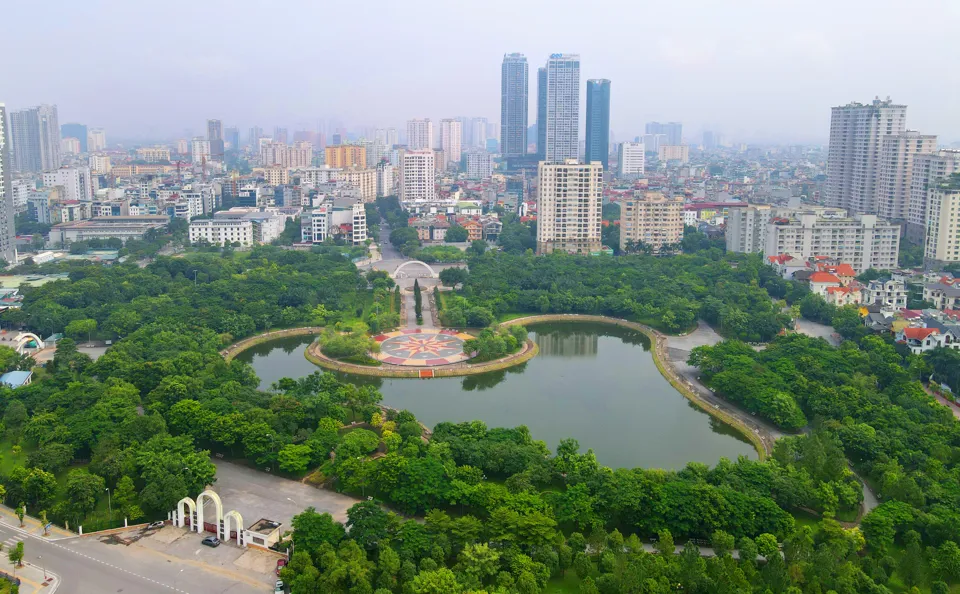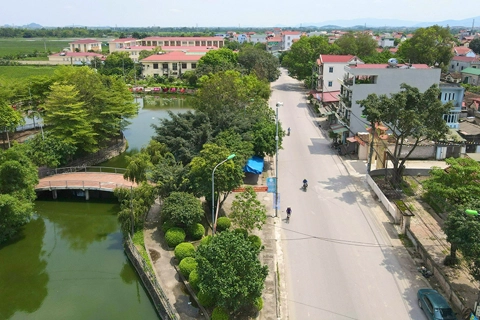Greening Hanoi through green space management
Hanoi's urbanization has been accelerating in recent years, and the rural green corridors have been shrinking.
By 2030, Hanoi aims to build a 'green urban area' and become a 'green city', calling for comprehensive management of the city's green spaces, according to Master La Hong Son - Vice Chairman of Hanoi's Urban Development Planning Association.
The city authorities have recognized that the planning of trees, parks, flower gardens, and lakes is an important criterion for Hanoi to achieve the goal of building a 'green urban area' (along with green buildings, green transport, green and clean industry, green environment, preservation of historical and cultural values, natural landscapes and environmentally friendly communities).
Cau Giay Park in Hanoi provides green space for local people. Photo: Pham Hung/The Hanoi Times |
Hanoi has the largest number of lakes and ponds in the country. Currently, there are about 111 such water bodies in 12 districts of Hanoi, with a total area of about 1,146 hectares (about 8.62% of the total urban area).
The city has an extensive network of rivers, including the Red River, the Duong River, the Nhue River, the To Lich River, the Kim Nguu River, the Lu River, and the Set River.
Meanwhile, Hanoi's urbanization has been accelerating in recent years, and the rural green corridors have been shrinking. Therefore, the Ministry of Construction will soon develop and issue standards and criteria for 'green cities' and development planning for suburban areas in the city.
For Hanoi, it is necessary to establish specific mechanisms and policies to manage green corridors and belts based on the characteristics of urban and agricultural ecosystems and landscapes.
To contribute to Hanoi becoming a modern city by 2065, these policies specifically aim to provide comprehensiveness and consistency, stressing the value of green spaces, ensuring the stability of the green structure, and preventing a large loss of green spaces.
It is imperative that standards and criteria for 'green urban areas' and 'green cities' be issued as a basis for local authorities to implement, with regulations for the management of green corridors in rural areas to be added as soon as possible.
In particular, Hanoi is expected to immediately review and supplement its planning for trees, parks, flower gardens, and lakes in the city up to 2030, with a vision for 2050.












